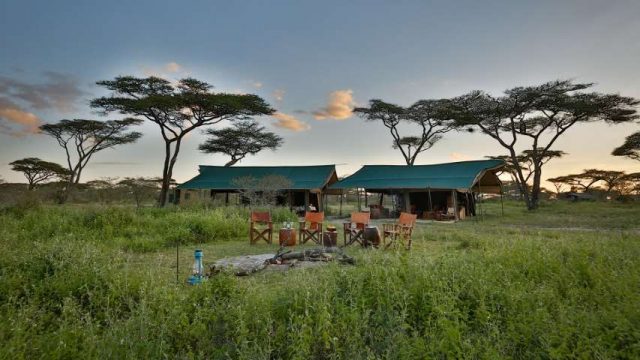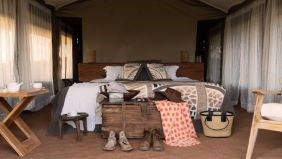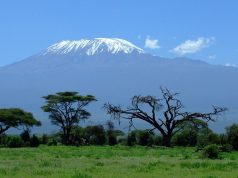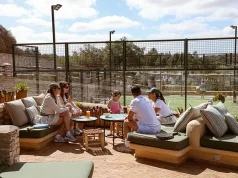
Experience glamping in Africa, the place where it all started when Ernest Hemingway and Teddy Roosevelt “glamped” on safari in the early 1900s. Located in Tanzania’s best wildlife destinations, Chaka Camps is a collection of boutique tented lodges offering the ultimate safari experience in comfort and style. Each property, unique in its style and design, is perfectly situated to deliver extraordinary wildlife experiences. Completing extensive renovations of Chaka Camp in late 2018 and early 2019, Chaka Camps unveiled the new look of its original property just in time for the 2019 Ndutu calving season.

As part of the renovation, all of Chaka’s tents were redesigned and replaced. The canvas of the complete camp was changed from a green to tan shade, brightening the interiors throughout the camp. The eleven spacious bedroom tents include en-suite bathrooms with flush toilets, bucket showers and hot water on demand. The bathroom area was expanded and redesigned, allowing for a new separate dressing area and more privacy in the shower and toilet units. Hardwood decking was installed in the bathrooms, and vanities were redesigned to allow for double sink basins. Newly designed wardrobes were also added. Furniture in the bedrooms was also upgraded and replaced, including brand new armchairs, bed end units, and carpets. The layout of the new tents allows for direct views onto the Serengeti plains from the bed and for entry to the dressing area from either side of the bed. Each tent’s verandah was outfitted with a brand-new set of table and chairs, allowing guests to enjoy a morning cup of coffee while spotting wildlife directly from the tent.
The mess tent area was redesigned and expanded, allowing for more space and greater air circulation in both the dining room and lounge. Comfortable couches and individual seating areas were added to the expanded lounge, and coffee tables were redesigned and replaced. All cushions and pillows were reupholstered or replaced as were the carpets. The campfire area was also upgraded with new chairs and a portable bar.
‘The renovation of Chaka Camp was a major undertaking and involved working with many different Arusha-based suppliers and designers over several months. The new tents were sewn on site at the Chaka Camps office in Arusha and many furniture pieces were constructed at our office complex as well. “We are excited about the new look of Chaka and hope our guests enjoy their holidays with us!’ said Omary Ridhiwan, General Manager, Chaka Camps Arusha.
The Serengeti is often considered the most iconic safari destination – the home of the Great Migration. Each year more than a million wildebeest move over its ancient grounds as the rest of the animal kingdom follows it. It is a journey of death and new life and Chaka Camp follows its movements; welcoming guests eager to observe the ‘Great Migration’. During the months of May through October, Chaka Camp is situated in the Northern Serengeti close to the Mara River. Wildebeest cross back and forth over the river as crocodiles lie in wait for their next meal. From December through April, the camp is located in Ndutu to witness the calving season and beginning of new life for the migration.
Kiota Camp, permanently located in Central Serengeti, combines year-round game viewing with sweeping views over the Serengeti plains. With eleven tents, the camp maintains a quiet presence within the surrounding woodlands and grasslands. Seronera airstrip is twenty minutes away, and many of the most famous landscape features and game concentrations can be almost immediately accessed. The camp features gourmet Swahili cuisine and warm Tanzanian hospitality.
Opened in June 2017, Chaka Camps’ newest lodge Kichuguu Camp is perfectly situated in a quiet woodland between the Tarangire River basin and Silale Swamp, making for easy access to excellent game viewing areas. Kichuguu (‘termite mound’ in English) Camp is a thematic representation of the termite mounds that dot the Tarangire landscape. The hidden details and patterns of the intricate mounds appear in the decor and furnishings throughout the camp. Spires are represented in the bedside lamps. Organic materials and shapes are used in the artwork and overhead lighting, featuring the open chimneys and vent holes that termites build in their mounds for ventilation. The carved tunnels inside the mounds are replicated in the tables and lamps.





